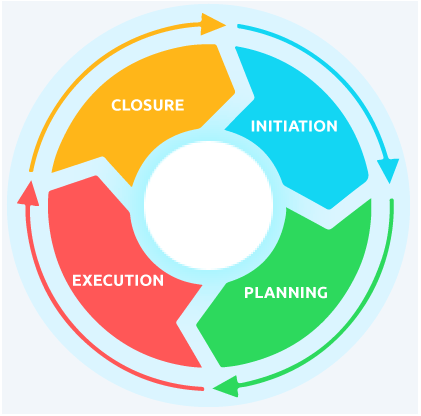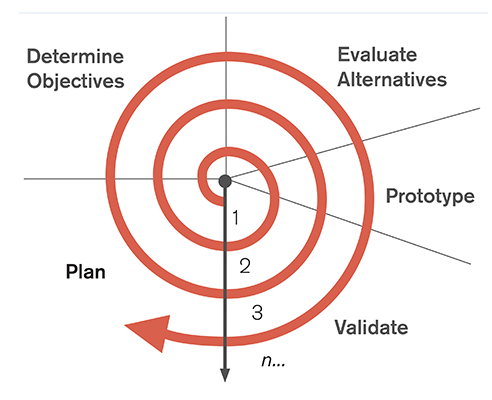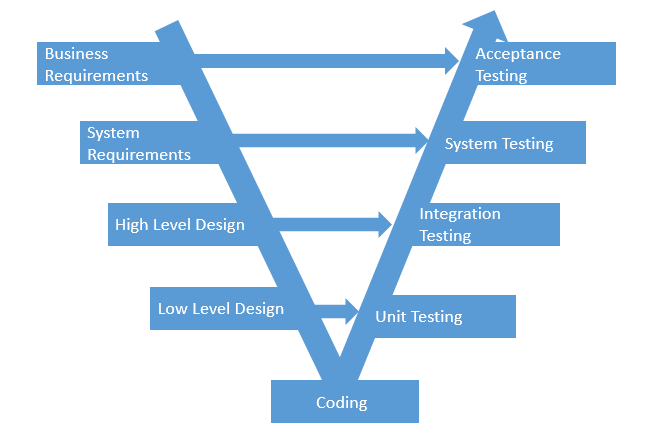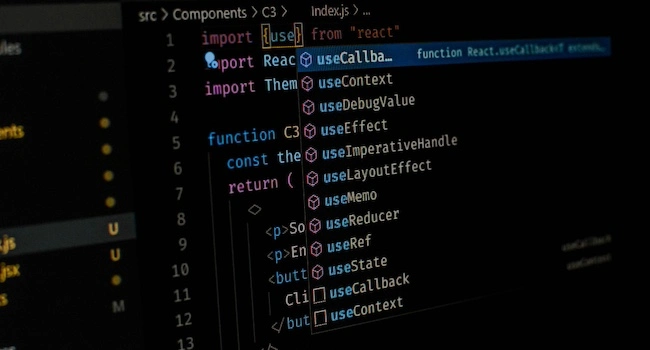Life cycle of the project
A project life cycle is a set of stages that must be passed to obtain a given result. To learn more, read the article.

Table of Contents:
A project is a set of interrelated activities that provide for the creation of unique products or services in conditions of constraints (time and resource). Each project has its own life cycle. In the development of the project usually requires several stages or steps. All stages in the aggregate are represented by the project life cycle. In any project, the following steps can be distinguished:

- Initiation - the promotion of ideas, as well as the preparation of project documents. Production studies were carried out and marketing studies were conducted. This stage raises a very important question for those who want to outsource the project: How to pick a web development agency fitting your needs?
- Planning - the definition of the timing of the implementation of the plan, the division of these processes at specific stages, as well as the appointment of the performers and responsible persons.
- Implementation - begins immediately after the plans were approved. This implies the full implementation of all planned actions.
- Completion - analysis of the data. This is an obligation in extremely rare cases.
This command can be independently detailed and broken down into development stages.
Features of the project life cycle
The project life cycles, as already mentioned above, can be built individually, taking into account the specifics of an enterprise. However, they all have some common features, namely:
- The largest number of costs and personnel involved in the project is in the middle of the cycle. The beginning and end of this process are characterized by low rates.
- At the first stage, the highest level of risk is observed, as well as uncertainty and doubts about the successful outcome of the activity. This stage is perfect to develop the MVP.
- At the beginning of the project life cycle, participants have great potential for making changes and improving methods for achieving goals.
Over time, it becomes more and more difficult to do.
Waterfall model of the project life cycle

Despite the fact that the life cycles for each individual project or organization may differ significantly, there are some generally accepted models that can serve as a basic basis. One of the most common life cycles is the waterfall. It involves the consistent implementation of each planned action and is characterized by the following features: drawing up a clear action plan to achieve the goals; for each action, a certain list of tasks is determined, as well as works that are required for executing the introduction of intermediate (control) stages, which will be monitored compliance with the previously developed plan.
Spiral model of the project life cycle

Project life cycles, which are cyclical, are developed according to the spiral model. At each turn, the effectiveness of development is determined in accordance with its cost. This model is different in that in its development one of the key positions is assigned to the risk component, which most often includes the following points:
- lack of qualified and experienced personnel;
- the ability to go beyond the budget or not meet the deadlines;
- loss of relevance of development during its implementation;
- the need to make changes in the production process;
- risks associated with external factors (supply disruptions, changes in the market situation, and so on);
- non-compliance of the production capacity with the required level;
- contradictions in the work of various departments.
V model of the project life cycle

This is an improved version of the classic cascade model. Here, at each stage, the current process is monitored in order to make sure that it is possible to move to the next level. In this model, testing begins at the stage of writing requirements, and each subsequent stage has its own level of test coverage. For each level of testing, a separate test plan is developed, that is, during testing of the current level, specialists also develop the following test strategy. When creating test plans, the expected test results are also determined and the entry and exit criteria for each stage are indicated.
In the V-model, a separate level of testing corresponds to each stage of system design and development. Here, the development process is represented by a downward sequence on the left side of the conventional letter V, and the testing stages are on its right edge. The correspondence of the stages of development and testing is shown by horizontal lines.
What model of the project life cycle to choose? The answer to this question depends on:
- The willingness of the customer to spend time and money to work out the requirements for the project results before starting the mvp software development.
- The degree of involvement of the customer project. His willingness to spend his time on the project.
- Type of contract for the project.
- The scale and complexity of the project and its web design.
- The degree of innovativeness of the project results.
- Security requirements for project products, etc.
Summing up, we can draw the following conclusions:
- The project manager may not use any of the existing models of the project life cycle, but in this case, he/she “reinvents the bicycle” for his project.
- There is no one model suitable for any project of the life cycle project.
- The more experience a project manager and the project team has in working with different project life cycle models, the more likely it is that they will be able to choose the most suitable project life project model for a particular project, and the most adequate methods and tools for planning and control for this model and making changes to the project.
Therefore, it is necessary to analyze the experience of completed projects in order to better understand which model of the project life cycle in which case is best suited for a project and continue to study the topic of life project projects.







